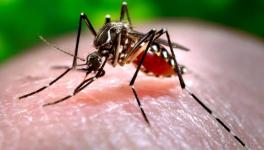The Remedy for India’s High Infant Mortality Rate is to Increase Investment in Primary Health Care

What trend has been observed in India’s infant mortality and under-five mortality rates in the latest Sample Registration System report?
THERE seems to be some euphoria in the country, with the Sample Registration System 2020 statistical report (‘SRS’) results showing a declining infant mortality rate (‘IMR’) and Under-five mortality rate (‘U5MR’). A number of media reports have praised the decline, especially in states like Uttar Pradesh and Bihar. Over the last decade or so, one sees a secular decline of two to three points each year, so in that sense the 2020 results are not spectacular in any way (see Table 1).
Do these trends actually denote significant gains?
The SRS sampling frame is revised every 10 years based on the results of the latest census, with the last revision in 2014. Therefore, the SRS sample within that decennial period is not independent, and hence any overlapping confidence interval for an SRS estimate indicates that the trend or changes observed are statistically insignificant. The 95 per cent confidence intervals for India’s IMR are overlapping between succeeding years, including 2019 and 2020, and hence, there is basically no significant decline in IMR to celebrate. More importantly, there is no significant decline in IMR in both Madhya Pradesh and Kerala between 2015 and 2020. Such decline is expected as India has still a long way to go if we view India’s performance globally.
Table1: Trends in India’s IMR as per SRS 2015-2020 – Figures are per 1,000 live births
| Year | India | Madhya Pradesh (Worst performer) | Kerala (Best performer) |
| 2015 | 37[36-38] | 50[44-56] | 12[8-16] |
| 2016 | 34[33-36] | 47[42-51] | 10[6-14] |
| 2017 | 33[31-34] | 47[42-51] | 10[5-14] |
| 2018 | 32[31-34] | 48[44-53] | 7[4-10] |
| 2019 | 30[29-31] | 46[42-52] | 6[3-10] |
| 2020 | 28 [27-29] | 43[39-48] | 6[3-10] |
Figures in parentheses indicate the 95 per cent confidence interval (‘CI’) from the same SRS.
Source: IMR from SRS reports and 95 per cent CI from SRS bulletin for the respective years.
As per the latest United Nations estimates for 201 countries (average of the 2015-2020 period), India’s rank is an unenviable 151, with Iceland at the top (IMR of 1.25) and Sierra Leone at the bottom. Most of our neighbours are well above India – Sri Lanka is ranked 67, China 83, Bhutan 138, Bangladesh 141 and Nepal 143. India can be happy that Pakistan is close to the bottom at 190 but when we compare with Sri Lanka, whose IMR is close to that of Kerala, then India’s IMR is over four times more than that of Sri Lanka. Globally, India’s IMR is three points higher than the World average.
India’s IMR in 2020 is estimated at 28 per 1,000 live births, and U5MR at 32 per 1,000. Within India, SRS 2020 tells us that Madhya Pradesh is the worst performer with an IMR of 43 and a U5MR of 51. Among the larger states, Kerala is the best performer, with an IMR of 6 and a U5MR of 8, though the top performer across all states is Mizoram, with an IMR of 3, which is more than nine times less than the country average and over 14 times less than Madhya Pradesh.
The 95 per cent confidence intervals for India’s IMR are overlapping between succeeding years, including 2019 and 2020, and hence, there is basically no significant decline in IMR to celebrate. More importantly, there is no significant decline in IMR in both Madhya Pradesh and Kerala between 2015 and 2020.
To sum up, we see huge variations across states; assuming that the Kerala IMR/U5MR is what India should strive for, there is a long way to go. This also means that India’s IMR/U5MR is much higher than all countries at the same level of economic development. The average IMR of upper-middle income countries, for instance, is 10, which is nearly three times less than India.
Why doesn’t India’s IMR/U5MR match up to the level of its economic category?
The reasons are not hard to find. India is one of the lowest public health spenders in the world, with a per capita spend of $20.19 by both the Union and state governments in 2019, giving it a rank of 38th from the bottom and, as per proportion of GDP, 23rd from the bottom. Apart from this, high levels of malnourishment and undernourishment directly impact infant and under 5 mortality rates. India’s rank is 101 out of 116, according to the Global Hunger Index Report 2020. This, despite India proclaiming that it has the world’s largest feeding program through the Integrated Child Development Scheme (‘ICDS’) and Mid-Day Meals.
Also read: Pandemic: Time to Finally Accept Public Health Needs Investment
Further, if we look at the components of IMR, we find that the largest contributor to IMR is neonatal mortality rate (death occurring less than 29 days after birth), which accounts for 72 per cent of IMR, and further, early neonatal mortality rate (death occurring less than seven days after birth), which is 53 per cent of IMR. This clearly indicates that a large chunk of IMR is due to medical reasons, and the poor health and nutritional status of the child-bearing woman.
But when it comes to U5MR, then the main cause is clearly malnourishment. Across the country, there are huge pockets of malnourishment of children, and this is clearly correlated to poor functioning and/or access to the ICDS program meant for under five-age group children as well as the inadequate reach of the Mahatma Gandhi National Rural Employment Guarantee Act, 2005 (‘MGNREGA’), which can assure minimal, decent wages for parents of such children, and help them escape the malnourishment cycle and consequently infant or U5MR death.
Even a high income state like Maharashtra has significant pockets of malnourishment-related infant and child deaths in Nandurbar, Palghar and Melghat, all of which are under the surveillance of the Bombay High Court through a public interest litigation that has been running for over one and a half decade. Orders of the high court have clearly identified poor/inadequate primary healthcare facilities, poor functioning of the nutrition rehab centres, inadequate ICDS and mid-day meals budgets, and a lack of access to the MGNREGA. Despite repeated strictures from the high court, the Maharashtra government has failed to respond adequately to remedy the situation, and child deaths continue unabated.
Also read: On World Food Day, India slips to 101st out of 116 countries in Global Hunger Index
What is the conspicuously peculiar trend in the data for some well-performing states?
Within the SRS’s IMR and U5MR data, we see an outlier position of a few states and Union Territories such as Kerala, Goa, Himachal Pradesh and Lakshadweep. All these states have low IMR, but what is peculiar is that their male IMR is 2 to 3 times higher than the female IMR, unlike most other states where the IMR of males is lower or similar to females. In Kerala, the male IMR is 12 and the female IMR is 4; in Himachal Pradesh, male IMR is 23 and female IMR is 12; in Goa, 7 and 3 respectively; in Lakshadweep, 8 and 4 respectively.
India is one of the lowest public health spenders in the world, with a per capita spend of $20.19 by both the Union and state governments in 2019, giving it a rank of 38th from the bottom and, as per proportion of GDP, 23rd from the bottom.
It is difficult to explain why these states have a higher favourable IMR for females. Maybe the answer lies in access to primary healthcare services, which are strong in these states and reduce gender discrimination, but there is no triangulation evidence for this.
However, demographically there is a possible explanation. These states have a low overall mortality rate as well as low IMR, and so the number of deaths that get counted are very few and hence inadequate to make a population estimate, perhaps leading to a larger sample error (see Table 1).
Why must this data be taken with a pinch of salt?
Since SRS only provides confidence intervals for some of these statistics in their statistical bulletin and not in their detailed report, it becomes difficult to interpret these results. Hence, when you further disaggregate for gender or rural/urban or age, the number of deaths get further reduced and may lead to inappropriate sample size. For instance, in Kerala, the SRS covers a population of 3.66 lakhs, which translates into 2,562 deaths across the state as per the crude death rate of 7 per 1,000. The total share of infant deaths comes to a mere 31 deaths, and this is too small a number to not only estimate IMR, but gets further distorted when we disaggregate for rural and urban or by gender. Similarly, for other small states which show low IMR, there could be such sampling error issues, and this raises the question whether the low IMR of these states and union territories is accurate or not.
To conclude, it is clear that India’s IMR and U5MR are not showing any significant decline, and hence, India‘s rank for IMR/U5MR performance globally continues to remain in the bottom quarter of all countries despite our robust economic growth rates. The only way this can be remedied is to invest much more in primary healthcare, ICDS, mid-day meals and MGNREGA to secure the health and nutrition of its citizens, and especially children.
Get the latest reports & analysis with people's perspective on Protests, movements & deep analytical videos, discussions of the current affairs in your Telegram app. Subscribe to NewsClick's Telegram channel & get Real-Time updates on stories, as they get published on our website.
























